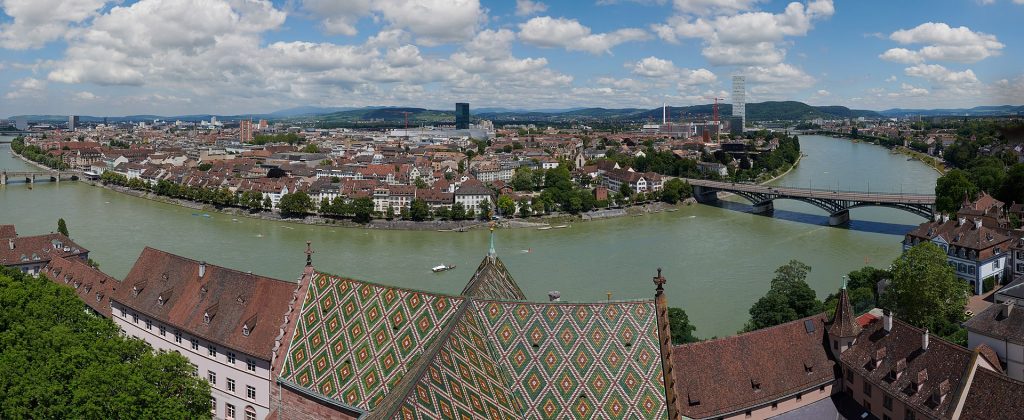
The Jewish presence in Basel probably dates from 1213. During the Middle Ages, as in many other cities in the region, the situation of the Jews varied between acceptance, persecution and expulsion, depending on the power in place. In the wave of major expulsions that took place between the end of the 14th and the end of the 15th century, the Basel Jews were expelled in 1397.
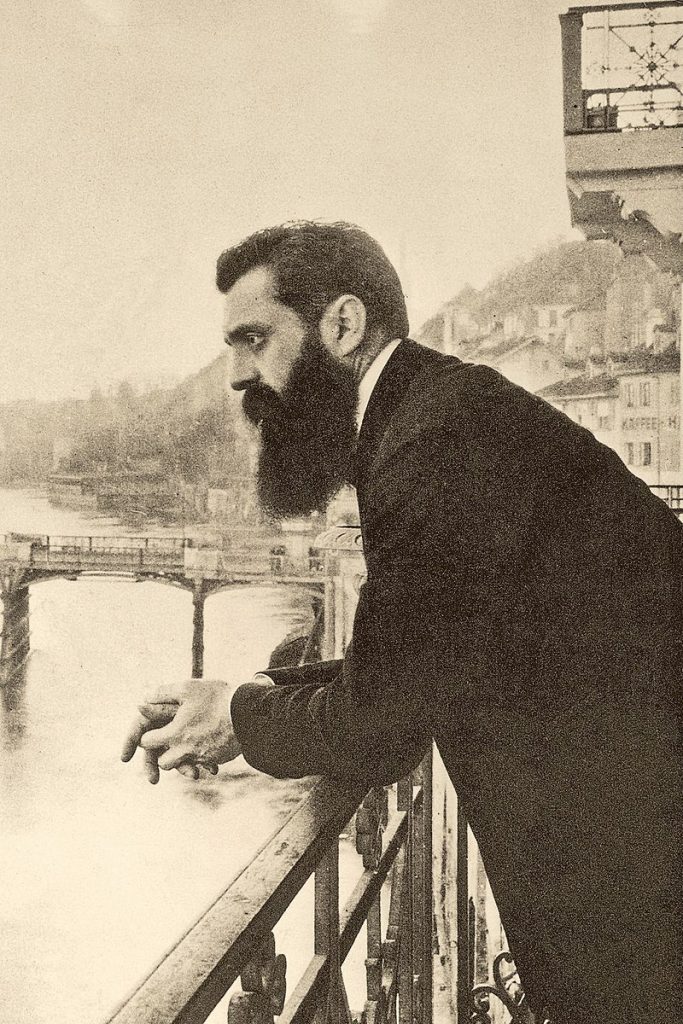
“In Basel, I created the Jewish State”, wrote Theodor Herzl in his diary after attending the First Zionist Congress, held from 29 to 30 August 1897. Nine more congresses would take place in Basel. A street in his name and a plaque in the casino serve as a reminder of the Zionist adventure’s origins in Basel.
First opened in 1868, the synagogue is the work of the architect Hermann Gauss, who took the one in Stuttgart, with its neo-Byzantine, Moorish, and Romanesque styles, as his model. It was enlarged twenty years later, and a second dome was added. During a further renovation in 1947, someone decided to cover the synagogue’s brightly colored walls in uniform gray. This gray corresponded better to the austerity of the era and local taste.
Forty years later, the colors of yesteryear resuscitated the refinished building. Modernizing the motifs had nonetheless dampened the eastern style. Inside, yellowish beige dominates, with blue and red decorations. A multitude of golden stars stand out against the dome. The polychromatic facades are red and white.
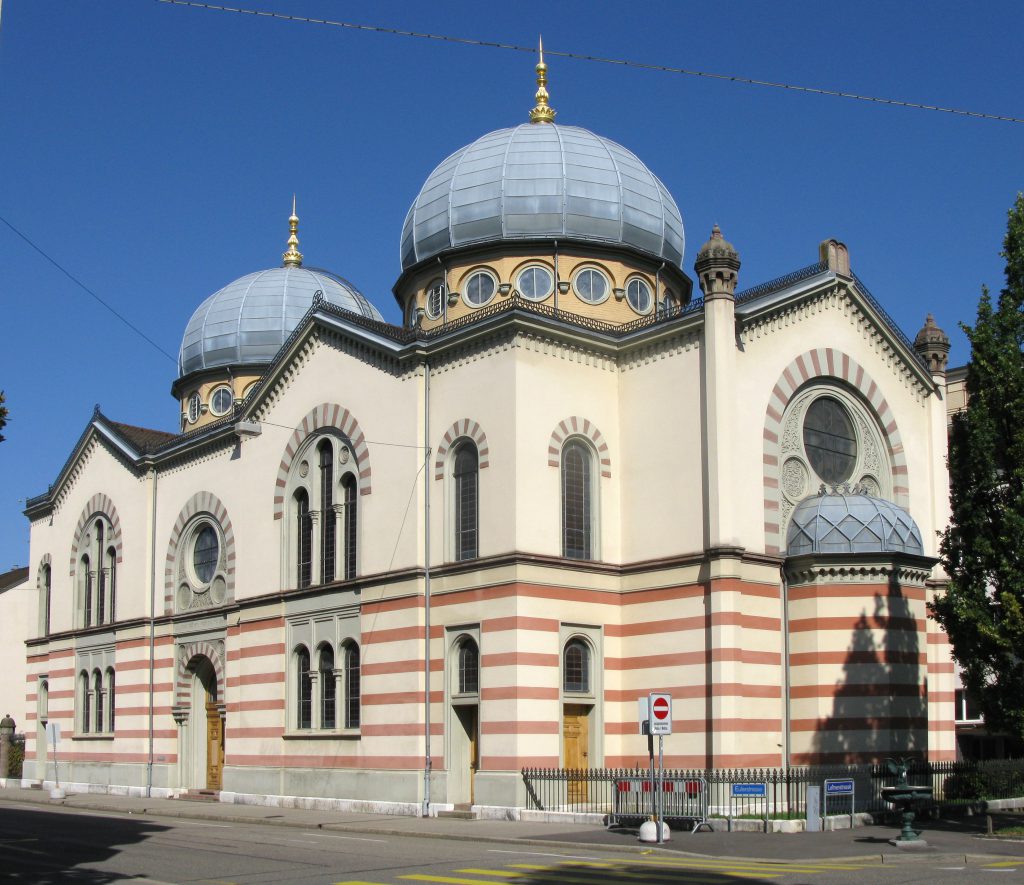
The only Jewish Museum in Switzerland (Jüdisches Museum der Schweiz) is found in Basel. Its collection reflects the region’s Jewish heritage and features books in Hebrew printed in Basel, gravestones, and documents on Jewish history and the Zionist congresses.
The Community Center houses as well the kosher restaurant Topas.
In 2012 the first synagogue in 83 years was opened. At that time, the Jewish community numbered almost 2000 members. It is part of the Chabad Feldinger Jewish Centre . It is located next to the Chabad Synagogue. It was vandalised in 2018. In the same year a kosher butcher shop was attacked several times.
Interview with Barbara Haene, Head of research and events at the Jewish Museum of Switzerland
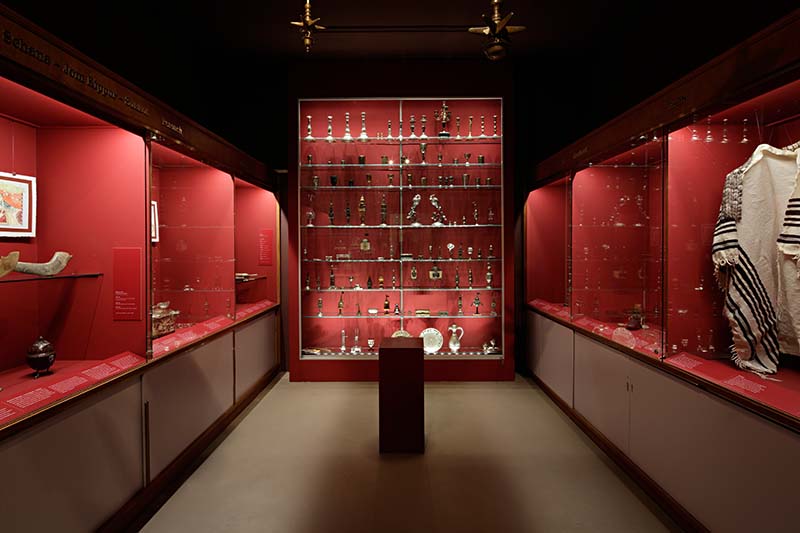
Jguideeurope: What events are planned for the European Days of Jewish Culture?
Barbara Haene: The Jewish Museum of Switzerland has been in charge of the organization of the European Days of Jewish Culture in Switzerland since its initiation in 1999. We have all kind of activities. The city tour “In Herzl’s footsteps through Basel” and the guided tour of the synagogue are also very popular every year.
Can you introduce some of the objects in the “Jewish for beginners and experts” exhibition?
As a historian working on the Jewish history of Switzerland, I of course have certain preferences. I particularly like objects that bear witness to the simple life of the Jews in the Endingen Lengnau countryside, for example, a Torah coat originally used for a woman’s dress.
Or a pocket watch from La Chaux-de-Fonds that testifies to the importance of Jews in the watchmaking industry in Switzerland. Of course, the first Zionist Congress, which celebrates its 125th anniversary this year, is also of great importance for Basel’s Jewish history. The Jewish Museum holds numerous objects relating to the first Zionist Congress. For example, a collotype showing the participants of the congress is worth seeing.
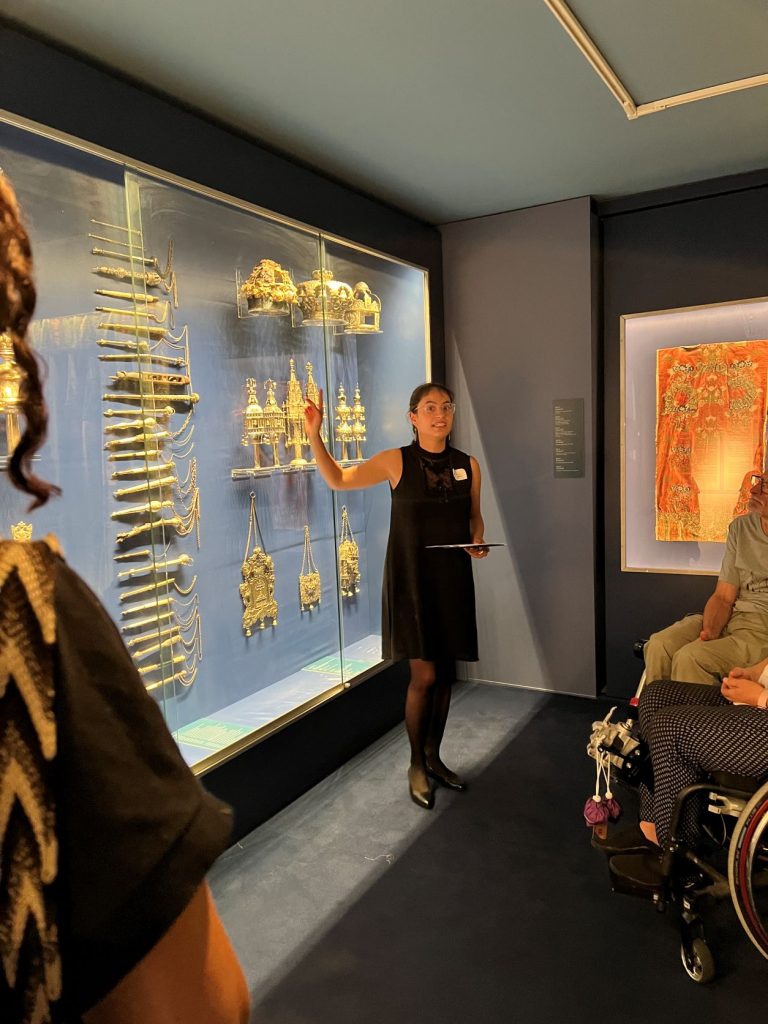
Have you noticed a change in public expectations in recent years?
Over the last few decades, the knowledge of young people has changed. They used to be relatively familiar with the biblical stories, especially the ones concerning Adam and Eve, Moses and the Ten Commandments, Rachel and Leah. They knew the Old Testament characters from church, from religion classes, or from their children’s Bibles. Today, secularization has greatly increased.
Few young people visit churches. Almost no one reads the Bible either. But today, those same young people know more about Jewish customs. They know about Hanukkah and Shabbat, about bar / batmitzva holidays, and about kosher regulations.
Diversity is in vogue. Young people encounter Jewish culture in school, on Netflix and Youtube, in pop music, and in food. Their knowledge of Judaism is marked by hummus, falafel and bagels, among other things.
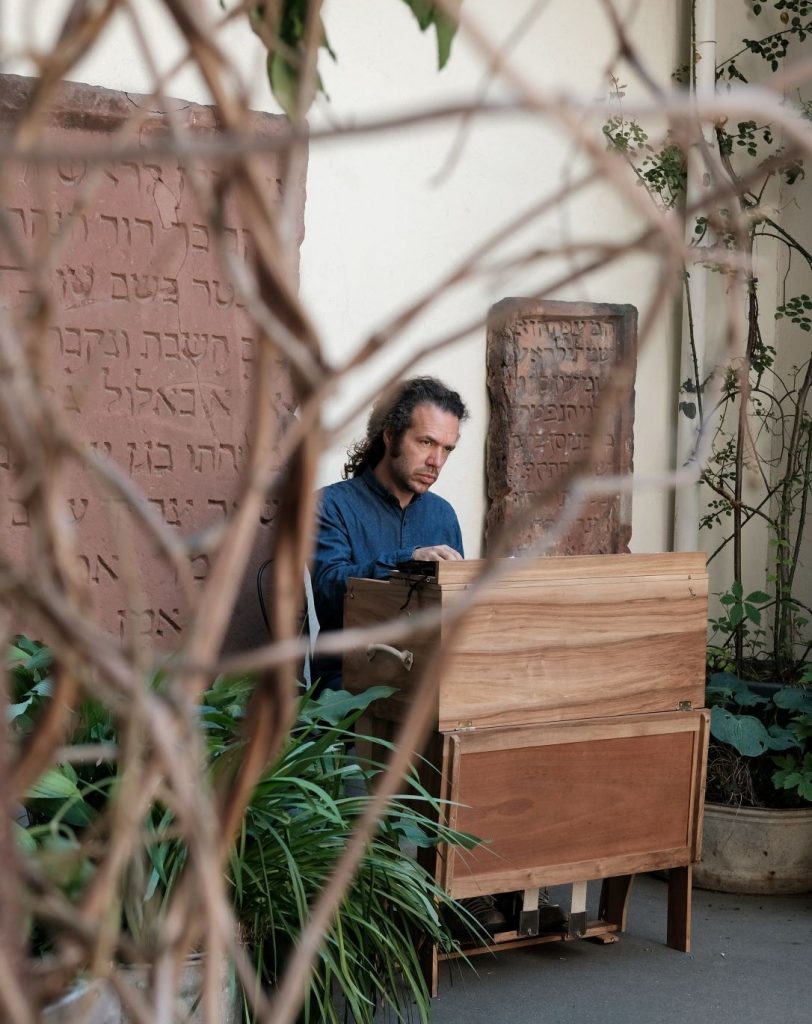
Can you tell us about an encounter with a visitor or speaker at a cultural event that made a particular impression on you?
A few weeks ago, we welcomed Rabbi Bea Wyler to the museum. We have her prayer shawl, her talith, in our collection. Bea Wyler was the first woman to serve as a rabbi in German-speaking Europe after the Holocaust. When she was ordained in the 2000s, she was confronted with many opposing currents as a woman in an all-male profession.
Today, she is the first in a series of young female rabbis. Women are valued, enjoy a certain prestige, and are only experiencing headwinds in some Orthodox and ultra-Orthodox circles.